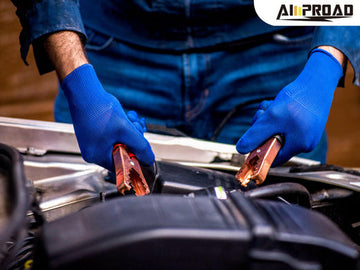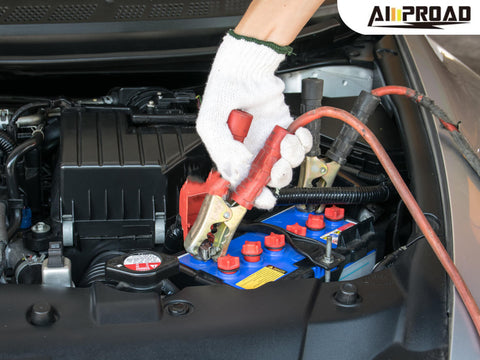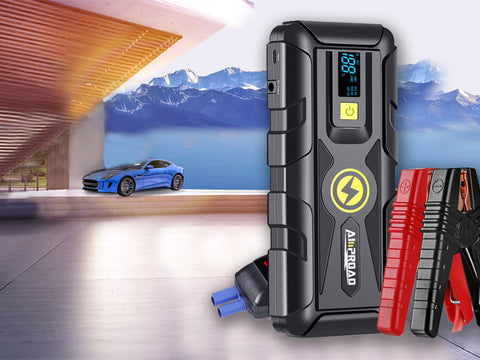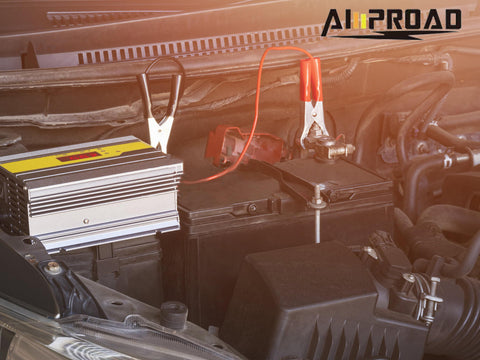
A portable jump starter can be a lifesaver when your car battery unexpectedly fails, providing a quick solution to get you back on the road. However, as with any powerful tool, understanding the potential risks associated with its use is essential for ensuring safety. These devices deliver a significant electrical surge to restart your vehicle, but improper use can lead to hazards like electrical shocks, sparks, or even battery explosions. Mistakes such as misconnecting cables, using faulty equipment, or attempting to jump-start a battery that’s severely compromised can increase the risk of accidents.
To use a portable jumper starter safely, taking precautions is key. Always begin by carefully reading the device’s instruction manual to familiarize yourself with its operation. Double-check cable connections before activating the jump starter to avoid errors, and wear protective gear to reduce the risk of injury. Regularly inspect the jump starter for damage or signs of wear to ensure it remains in proper working condition. By following these best practices, you can mitigate risks and use your portable jump starter with confidence, keeping it a reliable tool in times of need.
What are the Potential Risks of Using a Portable Jump Starter?
Using a portable jump starter can be a convenient solution for jump-starting a vehicle with a dead battery, but it's essential to be aware of the potential risks involved. One common safety concern is the risk of electrical shocks, which can occur if the jumper cables are not connected properly or if there is damage to the jump starter itself. Another risk is the possibility of sparks or even explosions, especially if there are flammable gases present near the battery. Additionally, using a car battery booster on a severely damaged or old battery can pose risks, as it may not hold a charge properly and could lead to further damage.
Common risks associated with jump-starting vehicles include connecting the jumper cables incorrectly, which can result in damage to the vehicle's electrical system or even cause a fire. Using damaged or faulty equipment, such as frayed cables or a malfunctioning car jumper box, can also increase the risk of accidents. It's essential to inspect the jump starter and cables for any signs of damage before use and to follow the manufacturer's instructions carefully to minimize these risks. Additionally, wearing protective gear such as gloves and safety glasses can help protect against electrical shocks and other hazards during the jump-starting process.
How to Mitigate Risks When Using a Portable Jump Starter?
When using a portable jump starter, there are several steps you can take to mitigate potential risks and ensure a safe jump-starting process. First and foremost, it's crucial to carefully read and follow the manufacturer's instructions provided with the jump starter. This includes familiarizing yourself with the proper procedure for connecting the jumper cables to the vehicle's battery terminals and ensuring that the jump starter is turned off before connecting the cables.
Safety precautions should also be observed, such as wearing protective gear like gloves and safety glasses to guard against electrical shocks and battery acid exposure. It's essential to work in a well-ventilated area to reduce the risk of exposure to hazardous gases, especially if the battery is located in an enclosed space. Additionally, keeping flammable materials away from the battery and avoiding smoking or using open flames nearby can help prevent sparks and potential explosions.
Proper maintenance of the jump starter is another important aspect of risk mitigation. Regularly inspecting the cables and connections for signs of wear or damage and replacing any worn or frayed components can help prevent accidents. Storing the jump starter in a cool, dry place when not in use and periodically checking its battery charge level are also recommended practices to ensure its reliability when needed. By following these safety precautions and best practices, you can minimize the risks associated with using a portable jumping starter and safely jump-start your vehicle when necessary.

What are the Safety Features to Look for in a Portable Jump Starter?
When considering safety features in a portable jump starter, there are several key factors to look for to ensure user protection. One of the most important features is reverse polarity protection, which helps prevent damage to the vehicle's electrical system by alerting users if the jumper cables are connected incorrectly. This feature is typically indicated by an audible alarm or visual indicator on the jump starter. Overcharge protection is another critical safety feature that prevents the jump starter from overcharging the vehicle's battery, which can lead to battery damage or even explosion. Additionally, some jumper starters include short-circuit protection, which safeguards against damage caused by accidental short circuits in the vehicle's electrical system.
When evaluating car jump starter models for safety considerations, it's essential to look for certifications and compliance with safety standards. For example, jump starters that are UL (Underwriters Laboratories) certified have been tested and meet rigorous safety requirements, providing users with peace of mind regarding their safety and reliability. It's also a good idea to choose jump starters from reputable brands known for their commitment to quality and safety. Reading reviews from other users can provide valuable insights into the safety features and performance of different jump starter models, helping you make an informed decision.
In addition to safety features, proper usage and handling are essential for ensuring the safe operation of a portable jump starter. Always carefully read and follow the manufacturer's instructions provided with the jump starter to minimize the risk of accidents or damage. Regularly inspect the jump starter for signs of wear or damage, and avoid using it if any components appear damaged or malfunctioning. By selecting a jump starter with essential safety features, choosing reputable brands, and following proper usage guidelines, you can minimize the risks associated with using a portable jump starter and safely jump-start your vehicle whenever needed.
Amproad offers a range of high-quality jump starters designed to provide reliable performance and user safety. Its jump starters are equipped with essential safety features such as reverse polarity protection, overcharge protection, and short-circuit protection to safeguard both the user and the vehicle's electrical system during jump-starting operations. With adaptive voltage and adjustable amperage settings, our jump starters are versatile and compatible with a wide range of vehicles, ensuring hassle-free use in various situations. Built to meet rigorous quality standards and backed by our commitment to customer satisfaction, Amproad jump starters are trusted by drivers worldwide for their durability, efficiency, and peace of mind in emergency situations.

Can Improper Use of a Portable Jump Starter Damage Vehicles?
Improper use of a portable jump starter can indeed pose risks of damage to vehicles if not handled correctly. One common concern is the potential for electrical system damage due to incorrect connections or excessive voltage, leading to blown fuses, damaged wiring, or even battery explosions. Moreover, using a jump starter with insufficient power output may not effectively start the vehicle, leading to repeated attempts that could harm the battery or other components. To mitigate these risks, it's crucial to follow proper procedures when jump-starting a car.
To prevent damage when using a jump starter, it's essential to adhere to safety guidelines and best practices, including knowing how to boost a car. First and foremost, ensure that the jump starter is compatible with the vehicle's battery type and specifications, including voltage and amperage ratings. Before connecting the jump starter, carefully inspect the battery terminals for any signs of corrosion or damage, and clean them if necessary. When making connections, always attach the positive (+) clamp to the positive terminal of the battery and the negative (-) clamp to a suitable grounding point, such as the vehicle's chassis, away from the battery and fuel system. Once connected, follow the instructions provided with the jump starter to initiate the jump-starting process safely and effectively.
By understanding the potential risks associated with improper use and taking necessary precautions, users can avoid damaging their vehicles when using a portable jump starter. Following manufacturer guidelines, practicing safe handling procedures, and ensuring proper connection techniques are essential steps to protect both the vehicle and the jump starter during the jump-starting process.

Are There any Guidelines or Standards for Safe Jump Starting Procedures?
Guidelines and standards for safe jump-starting procedures serve as essential resources to ensure the proper and secure use of portable jump starters. Industry organizations such as the Society of Automotive Engineers (SAE) and the National Fire Protection Association (NFPA) provide recommendations and standards regarding safe jump-starting practices. These guidelines typically cover various aspects of jump-starting, including proper connection procedures, voltage and current limits, and safety precautions to prevent electrical hazards and vehicle damage.
Manufacturers of portable jump starters also offer specific instructions and guidelines for safe usage, which users should strictly adhere to. These guidelines typically include detailed steps for connecting the jump starter to the vehicle's battery, ensuring correct polarity, and initiating the jump-starting process. Additionally, manufacturers may provide safety tips and warnings to alert users to potential risks and hazards associated with jump-starting, such as the risk of electrical shock or battery explosion.
Following manufacturer instructions and guidelines is paramount to ensure safe jump-starting procedures. Users should carefully review the user manual provided with the jump starter and follow the recommended procedures step by step. It's essential to pay attention to details such as proper clamp placement, avoiding contact with moving parts or hot surfaces, and disconnecting the jump starter promptly after the vehicle starts. By adhering to these guidelines and exercising caution throughout the jump-starting process, users can minimize the risk of accidents, injuries, and damage to both the vehicle and the jump starter.


